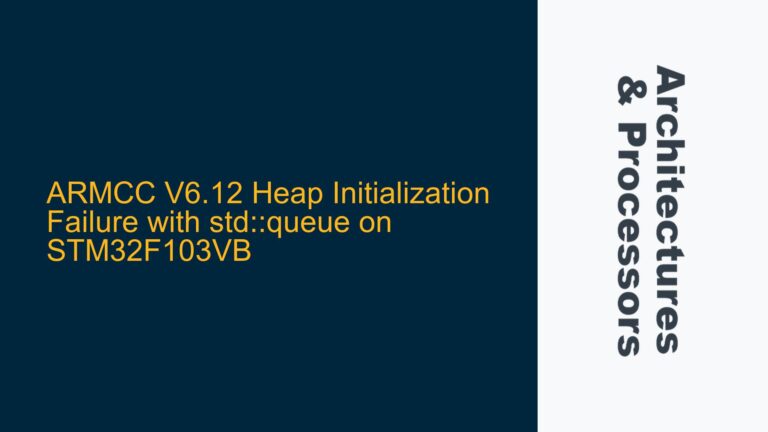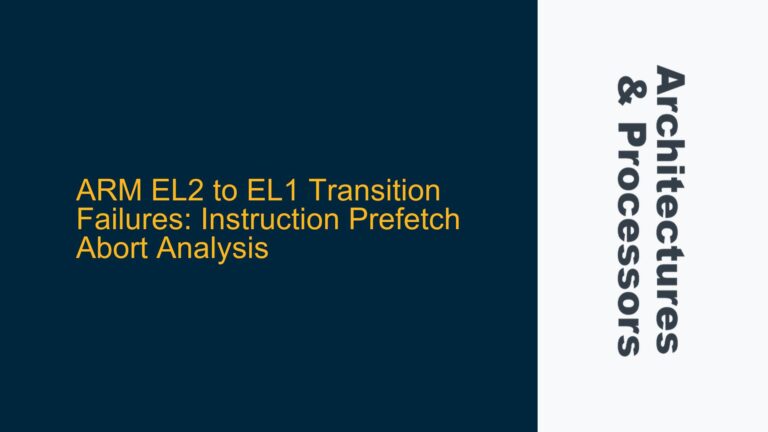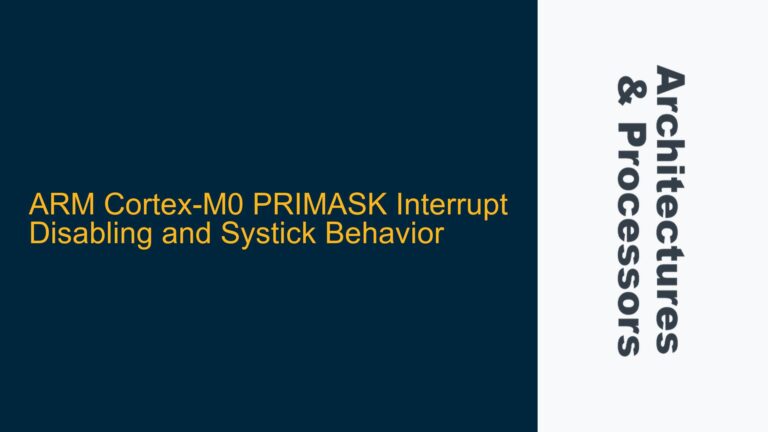Understanding ADC Channel Reading and Serial Output on ARM Cortex-M3
The process of reading an ADC channel and printing its value to a serial terminal on an ARM Cortex-M3 microcontroller, such as the ATSAM3X8E, involves several critical steps. These steps include configuring the ADC peripheral, setting up the UART for serial communication, and ensuring proper data handling between the ADC and UART peripherals. The ATSAM3X8E microcontroller, based on the ARM Cortex-M3 architecture, provides a robust platform for embedded applications, but it requires a deep understanding of its peripherals and their interaction with the core.
The ADC peripheral on the ATSAM3X8E is a 12-bit successive approximation analog-to-digital converter, capable of converting analog signals into digital values. The UART peripheral, on the other hand, is responsible for serial communication, allowing the microcontroller to transmit data to a serial terminal or other devices. The integration of these peripherals requires careful configuration and synchronization to ensure accurate data acquisition and transmission.
The primary challenge in this process is ensuring that the ADC readings are accurately captured and transmitted without data loss or corruption. This involves understanding the timing requirements of the ADC, the data format for UART transmission, and the potential bottlenecks in the system that could lead to performance issues. Additionally, the ARM Cortex-M3 architecture provides several features, such as DMA (Direct Memory Access) and interrupt handling, which can be leveraged to optimize the data transfer process.
ADC Configuration and Timing Issues
One of the most common issues when working with the ADC on the ATSAM3X8E is improper configuration, which can lead to inaccurate readings or no readings at all. The ADC peripheral must be configured with the correct clock source, sampling time, and reference voltage to ensure accurate conversions. The clock source for the ADC is typically derived from the microcontroller’s main clock, but it must be divided down to a frequency that is within the ADC’s operating range. The sampling time, which determines how long the ADC samples the analog input, must be set according to the characteristics of the input signal.
Another critical aspect of ADC configuration is the reference voltage. The ATSAM3X8E allows for both internal and external reference voltages, and the choice of reference voltage can significantly impact the accuracy of the ADC readings. If the reference voltage is not stable or is incorrectly set, the ADC readings will be inaccurate. Additionally, the ADC peripheral must be enabled and calibrated before it can be used. Calibration ensures that the ADC’s internal circuitry is properly adjusted for accurate conversions.
Timing is also a crucial factor in ADC operation. The ADC conversion process must be synchronized with the rest of the system to ensure that the data is captured at the correct time. This is particularly important in applications where the ADC is used to sample rapidly changing signals. If the timing is not properly managed, the ADC may miss critical data points or produce inconsistent readings.
UART Configuration and Data Transmission Challenges
Once the ADC has captured the data, the next step is to transmit it to a serial terminal using the UART peripheral. The UART must be configured with the correct baud rate, data format, and parity settings to ensure reliable communication. The baud rate determines the speed at which data is transmitted, and it must match the baud rate of the receiving device. The data format includes the number of data bits, stop bits, and parity bits, which must be set according to the requirements of the communication protocol.
One of the challenges in UART communication is ensuring that the data is transmitted without errors. This requires proper handling of the UART’s transmit buffer and ensuring that the data is sent in a timely manner. If the transmit buffer is not managed correctly, data may be lost or corrupted. Additionally, the UART peripheral must be configured to generate interrupts or use DMA to handle data transmission efficiently.
Another potential issue is the synchronization between the ADC and UART peripherals. The ADC may produce data at a rate that is faster than the UART can transmit, leading to data overflow or loss. To address this, the system must implement a buffering mechanism to store the ADC data until it can be transmitted by the UART. This can be achieved using a circular buffer or FIFO (First-In-First-Out) queue, which allows the ADC data to be stored temporarily before being sent to the UART.
Implementing Efficient Data Handling and Synchronization
To ensure accurate and reliable ADC readings and UART transmission, the system must implement efficient data handling and synchronization mechanisms. This involves using interrupts or DMA to manage the data transfer between the ADC and UART peripherals. Interrupts can be used to signal when the ADC has completed a conversion or when the UART is ready to transmit data. This allows the system to handle data transfer in a timely manner without polling the peripherals, which can be inefficient and lead to performance bottlenecks.
DMA can be used to automate the data transfer process, reducing the load on the CPU and improving system performance. The DMA controller can be configured to transfer data directly from the ADC’s data register to the UART’s transmit buffer, eliminating the need for CPU intervention. This is particularly useful in applications where the ADC is sampling data at a high rate, as it allows the system to handle large amounts of data without overwhelming the CPU.
In addition to using interrupts and DMA, the system must also implement proper data synchronization mechanisms to ensure that the ADC data is transmitted in the correct order and without errors. This can be achieved using data synchronization barriers or memory barriers, which ensure that the data is written to memory in the correct order and that the UART transmits the data in the same order it was received.
Finally, the system must be tested and validated to ensure that the ADC readings are accurate and that the UART transmission is reliable. This involves using test equipment, such as oscilloscopes and logic analyzers, to verify the timing and accuracy of the ADC and UART operations. Additionally, the system should be tested under different operating conditions, such as varying input signal levels and baud rates, to ensure that it performs reliably in all scenarios.
In conclusion, reading an ADC channel and printing the value to a serial terminal on an ARM Cortex-M3 microcontroller involves several critical steps, including ADC and UART configuration, data handling, and synchronization. By understanding the potential issues and implementing efficient data handling mechanisms, the system can achieve accurate and reliable ADC readings and UART transmission.






